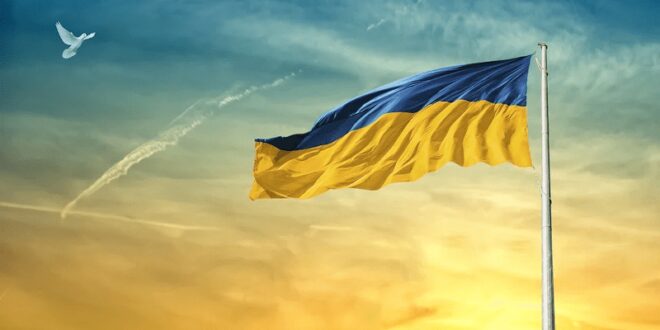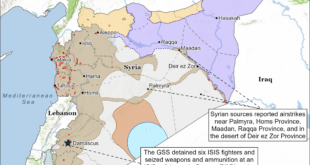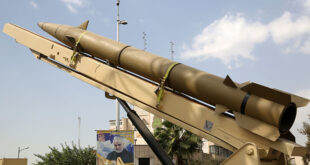Since Russia launched a large-scale military operation against Ukraine in February 2022, the Russia-Ukraine war has continued, with the battlefield situation remaining in a stalemate. In modern society of the 21st century, it is an extremely rare human tragedy for such a large-scale war to last for so long, resulting in the loss of millions of lives. However, one thing that concerns people around the world now is when this war will end. According to long-term information tracking and research by the ANBOUND, in 2024 we concluded that 2025 will be a crucial year. If the realistic pursuit of peace in Ukraine is to be achieved, then Ukraine, Russia, as well as regions such as Europe and the United States, need to abandon their illusions and work together to promote peace. Returning to the current situation, the main driving factors behind the prospects for peace in Ukraine are as follows.
First, Russia does not want to give up its status as a great power and is willing to settle if a peace agreement is reached. It knows that even if winning in the Ukraine, it would not have much significance, as Russia would become a third-world country with no one paying attention to it. This is not what President Vladimir Putin desires. Currently, Russia’s relationship with developed countries like the U.S. and Europe has fallen to its lowest point since the end of the Cold War and the dissolution of the Soviet Union. High-level exchanges between Russia and Western countries have nearly completely ceased, and official diplomatic contacts are maintained at the lowest level. Cooperation mechanisms such as the Russia-EU summit and the “Russia-NATO Council” have nearly been abandoned. In addition, Russian regional influence has been rapidly declining. Moldova has started EU accession negotiations, and Georgia has also become an EU candidate while Central Asian countries are increasingly adopting “multi-vector diplomacy”, strengthening ties with China, the U.S., the EU, and Japan, at the same time distancing themselves further from Russia. Armenia, dissatisfied with Russia’s inability to fulfill its alliance obligations, ultimately lost in its geopolitical conflict with Azerbaijan, expressing strong discontent with Russia. Currently, the issue that Putin must consider is what kind of relationship he wants to have with the world, especially the U.S., in the future. It is highly likely that he hopes to maintain an equal great power status with the U.S., but this can only be achieved through a ceasefire in Ukraine. Otherwise, even dialogue will be impossible. Therefore, Russia is willing to settle if possible, giving the U.S. face, while negotiating for the continuation of its status as a world power and gradually improving its current poor international relations.
Second, Russia’s economy is already in a predicament, and the objectives of weakening it have been achieved. Currently, the country’s military and civilian industries are experiencing widespread shrinkage and even decline. Economic data from 2023 shows that the overall output of Russia’s non-war-related manufacturing sector fell by 0.4%; in the first three quarters of 2024, output in Russia’s mining industry including oil and gas. declined year-on-year, and the year-on-year growth in the construction sector was nearly zero. At the same time, its crop yield in 2024 also dropped by about 15%. In addition, Russia is facing significant high inflation, which has led to a substantial reduction in national wealth. Although Russia has raised its benchmark interest rate to an exaggerated 21%, inflation remains stubbornly high. Many businesses have also been impacted. With the increase in the benchmark interest rate, interest expenses now account for a quarter of business revenue. According to Russian media outlet Meduza, due to soaring interest rates and liquidity shortages, the bankruptcy rate of Russian companies surged by 20% in 2024. In fact, Russia has already begun to rely on North Korea, and the road to post-war recovery is long. A credible report indicates that about 60% of Russia’s artillery ammunition on the Ukrainian battlefield comes from North Korea. Last year, about one-third of the ballistic missiles launched at Ukraine by Russia also came from North Korea. North Korea has delivered around 20,000 containers of ammunition to Russia, including over 5 million artillery shells, dozens of missiles, and more than 100 Mars-11 ballistic missiles. Additionally, reports indicate that North Korea has sent four brigade-sized special operations forces to Russia, totaling 12,000 soldiers.
Third, Russia knows it is truly unable to annex Ukraine. This war has created deep enmity between two peoples who once shared a common history, and this hatred will be hard to resolve for at least a century. A credible battlefield report shows that Russia has already suffered more than 800,000 military casualties. At the same time, Russia has nearly exhausted its stockpiles of conventional weapons from the Soviet era. The Russian population has paid a heavy price for the war, with living standards severely deteriorating. Parts of the Kursk region in Russia have been occupied by Ukrainian forces. Ukraine has also suffered significant losses, with many civilians killed or wounded in Russia’s long-range attacks, and vast amounts of wealth destroyed. Currently, nearly 20% of Ukraine’s territory is under Russian control. Clearly, both sides have suffered tremendous losses. Russia’s resources are now nearing their limit. Although Putin does want victory, if the nation is exhausted and the people are filled with discontent, “victory” becomes an impossible goal. More critically, Russia’s military is simply not capable of controlling all of Ukraine; even with all its efforts. Therefore, Putin is now seeking to strike a balance between territorial gains and military power. Russia is approaching a breaking point, and the loss of a million soldiers is the maximum limit Russia can endure. As a result, Putin is under increasing pressure to accept negotiations before this threshold is reached.
Fourth, Ukraine has limited resources and understands that no one can be fully relied upon. Although Ukraine is the second-largest country in Europe, it cannot defeat Russia on its own. Compared to Russia, Ukraine has limited resources and cannot sustain a long-term effort. Russia is the largest country in the world, with a land area of 17.098 million square kilometers, which is more than 28 times the size of Ukraine’s 603,700 square kilometers. At the same time, Russia has a population of 143.8 million, nearly 3.9 times larger than Ukraine’s population of 37.7 million, giving it a significant advantage in terms of labor force and military personnel. Additionally, Russia’s GDP in 2023, at current U.S. dollars, was USD 2.02 trillion, more than 11 times Ukraine’s GDP of USD 178.76 billion. Russia’s per capita GDP in 2023 was USD 13,800, 2.7 times that of Ukraine’s per capita GDP of USD 5,069.7. Moreover, Europe and the United States are unreliable. Europeans, in particular, are reluctant to provide aid to Ukraine. The European Union’s total aid commitment to Ukraine has been steadily increasing, reaching EUR 146 billion by February 29, 2024, while the actual amount disbursed to Ukraine has only been EUR 78 billion, accounting for just 50% of the committed amount. The United States is also unwilling to provide substantial support. As of February 29, 2024, the total military aid the U.S. has allocated to Ukraine amounts to EUR 43.1 billion, just EUR 1 billion more than Europe’s military aid to Ukraine. Even if the U.S. delivers all the weapons that have been funded by Congress, Ukraine, which suffers from bureaucracy and widespread corruption, will likely only be able to use these funds and weapons for about half a year.
Fifth, the United States, particularly under Trump, seeks to disengage from Europe as quickly as possible to minimize losses. Due to the high costs associated with war support, the U.S., especially under Trump’s domestic-first strategy, is reluctant to become further entangled, believing that European nations should shoulder more of the military aid burden. Recently, President Trump, in his typical unrestrained manner, expressed his stance on this issue. When discussing aid to Ukraine, he emphasized that NATO’s European member states need to contribute more financially, rather than the U.S. reducing its assistance. From the outset, Trump has criticized NATO’s European members, urging them to allocate 5% of their GDP to defense spending, nearly double the current levels for many countries. In fact, during his first term, the U.S. and Europe engaged in a trade war, and Trump even threatened that the U.S. would withdraw from NATO if European members did not increase their defense budgets. However, Europe believes that the U.S. should bear a larger share of the responsibility for aiding Ukraine, given that if Europe were to be consumed by Russia, it would pose a significant geopolitical threat to the U.S. Consequently, they argue that helping Europe equates to helping the U.S., and saving Ukraine is the first step in saving Europe. Moreover, they feel that this war is already having a profound impact on Europe, and if it continues, the consequences for them will only worsen.
Sixth, right-wing movements are rising across Europe, while the left-wing is increasingly preoccupied with its own challenges. In recent years, due to sluggish economic growth, frequent political instability, decreased public sense of security, and the amplification of social media, right-wing, especially far-right, parties have been rapidly gaining traction across Europe. Far-right parties have emerged as the leading forces in France, Italy, and Austria, while ranking second in Germany and the Netherlands. In France, Marine Le Pen’s far-right National Rally won a resounding victory, delivering a significant blow to President Emmanuel Macron. According to preliminary results, the National Rally garnered more than twice the votes of Macron’s centrist Renaissance Party. In Germany, the anti-immigration Alternative for Germany (AfD) defeated Chancellor Scholz’s Social Democratic Party with 15.9% of the vote compared to 13.9%. In Italy, Prime Minister Giorgia Meloni’s Brothers of Italy party exceeded expectations, securing 28.8% of the vote. In the three largest EU economies, i.e., Germany, France, and Italy, far-right parties have collectively risen to power. This trend is expected to continue, particularly in the European Parliament elections scheduled for June 2024, where mainstream parties are projected to lose ground. The far-right European Conservatives and Reformists group is expected to win 72 out of 400 seats, while the Identity and Democracy group, further to the right on the political spectrum, is anticipated to secure 58 seats.
Based on the detailed analysis above, a senior researcher at ANBOUND pointed out that the prediction made last year that the Russia-Ukraine war could end in 2025 remains valid. Compared to the ongoing war, if Ukraine ends the conflict and avoids stubborn resistance, it has the potential to become another Poland in Europe with a thriving economy. In contrast, Russia may not fare as well. After the war ends, Russia will face significant internal contradictions. In such a scenario, Asia is likely to become an unprecedented hotspot, while Europe will only be left to rebuild its own chaotic situation.
Final analysis conclusion:
2025 will be a key year for the Ukraine conflict. Currently, the main driving factors for the prospects of peace in Ukraine are as follows: Russia does not want to give up its status as a major power; its economy is in crisis; and it understands it is unable to conquer Ukraine. Additionally, Ukraine has limited resources and knows it cannot rely on anyone; the United States, especially under Trump, wants to disengage from Europe as soon as possible; at the same time the right-wing movements are rising across Europe. Therefore, if the war ends, Ukraine’s economy could thrive. In contrast, Russia may not fare as well. In this scenario, Asia is likely to become an unprecedented hotspot, while Europe will remain a self-rebuilding, chaotic region.
 Eurasia Press & News
Eurasia Press & News




